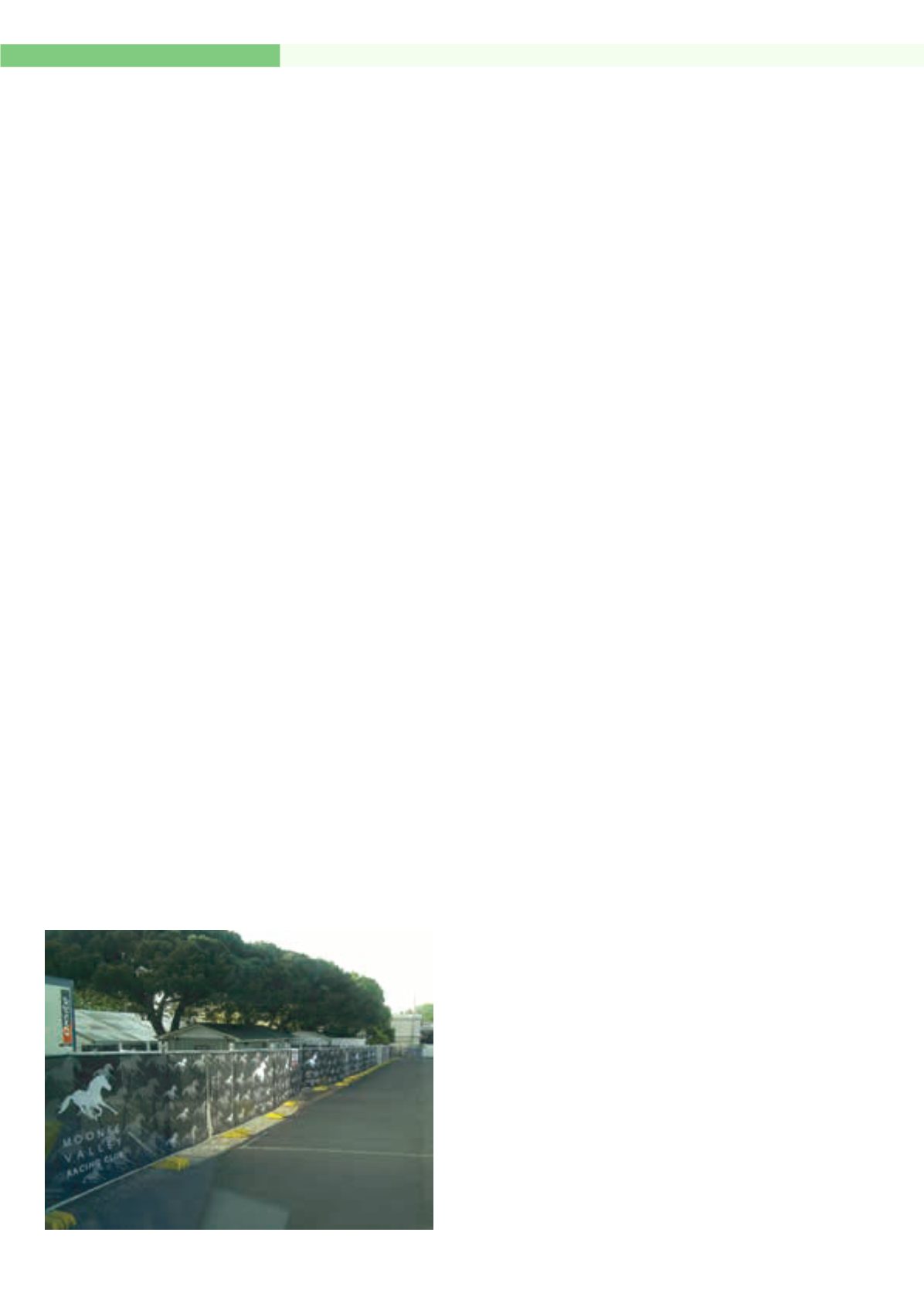
14 | HIRE
AND
RENTAL
NEWS
| NOVEMBER 2013
INDUSTRY IN FOCUS
Victorian Temporary Fencing, a division
of the Lee Fencing Group based in Victoria,
has relocated to new premises four times
the size of its old site after out-growing its
previous site.
The company had increased its stock
holdings and needed a bigger factory and
workshop to enable on site equipment
repairs and maintenance, as well as
providing safer storage and more clearly
defined work and factory areas to
facilitate good workflow.
According to Damian Lee, Managing
Director of Victorian Temporary Fencing,
the new site features a one way drive
through facility; waiting and loading bays
and all new facilities.
“We are in the same suburb we started
in, Preston. We moved in December
last year and while the factory itself
was an ideal size it needed refitting
and remodeling. We had to bring in
new power and water and build all
the amenities and offices as well as the
lighting and ventilation and wash down
bays. We even had to start by clearing off
the old rubbish from the site.
“Before we began the refit, we brought
in a ‘Lean’ consultant who showed us how
to streamline our business and processes
and systems to reduce handling and
increase productivity.
“The streamlining allows us to know
where our product is at any one time
Temporary fencing grows up
Often considered a necessary evil and treated with total disregard and contempt by end users, temporary fencing has come a long
way since its introduction in Australia less than 20 years ago. What many people don’t realise is it is actually a sophisticated piece
of equipment with many facets; engineered and designed to withstand wind loadings and the elements all the while protecting job
sites and the public from straying into dangerous zones as well as offering space to display promotional and advertising materials.
Here Victorian Temporary Fencing Managing Director Damian Lee talks about the company’s recent relocations as well as describes the
biggest issues in the temporary fencing market.
and whether to repair, scrap or rehire it.
Everything is documented.”
Victorian Temporary Fencing’s product
line-up includes Pool Safety Fencing, Chain
Link fencing; Ground Control Barriers; and
Timber Hoarding.
“Most councils insist on pool safety
fencing when building pools. Our
fencing passes all Australian Standards
and includes a gate with a self-locking
mechanism. We also offer chain link
fencing (diamond pattern). It is our
original and older type of temporary
fencing. Chain Link fencing does the same
job as welded mesh panels which are
square welded sheets of mesh.
“When temporary fencing started in
Australia about 15-18 years ago, everyone
offered chain link fencing. Slowly that
has changed to welded mesh fencing. The
original chain link model is a cheaper line
and while we keep maintaining our panels,
we will not replace them and eventually
we will phase that line out.
“We changed over to welded mesh
panel fencing about 10 years ago and
at the time, we changed over our whole
panel design; we went for a heavier duty,
slightly smaller panel with a pipe frame
double the size. It is more durable and
strong and more difficult to destroy. Their
longevity is good compared to the old
chain fencing.
“Nowadays, 99% of temporary fencing
comes out of China.
We held onto our
manufacturing for as
long as possible but we
bowed to cost strictures
and now we have them
manufactured offshore
to Australian Standards.
“My brother is on the
Board of Australian Wire
Industry Association
(AWIA) and the
Temporary Fencing
Industry Association is
an umbrella group of
AWIA.
“Temporary fencing
if not done right and to
Standard, can actually
be quite dangerous. When we realised
there was no Standard for the industry
we developed and wrote the Australian
Standard for temporary fencing with three
other major players to ensure we were
protecting our industry and market.
“One of the biggest issues I see in the
temporary fencing market is reluctance
for end users to see temporary fencing as
a piece of hire equipment of any great
value. Most end users see it as a necessary
evil. The contempt with which it is treated
is amazing. Temporary fencing panels with
footers and blocks and clamps each cost
approximately $100. When you factor in
the meter age of fencing requirements,
that’s a big cost.
“We find a lot of clients want it written
into the hire contract they won’t pay for
damaged or lost fencing stock. Temporary
fencing is often moved by different people
when it is on a job site so it’s common
for pieces of it to go missing. And that’s
probably the second biggest issue in the
temporary fencing industry; lost and
missing stock.
“We might go out to pick up 1000m
of temporary fencing placed 12 months
previously. We’ll find some is stacked
here and some is stacked over there. We
reconcile the stock and send the client a
bill for the missing equipment. It’s amazing
how quickly the missing stock is found
once the client receives the bill for its
replacement.
“Hoardings are the second biggest
part of temporary fencing. Hoardings are
a solid timber fence which is great for
advertising or promotional use.
“Timber Hoarding is a necessity for
construction and demolition sites to
prevent dust and debris travelling outside
the site and to protect pedestrians. It is
fast and easy to assemble on site and
offers flexibility; panels can be removed
to enable access on site and then returned
to protect the public. Certified engineered
computations are also available.
“Event fencing is the same as the heavy
duty mesh fencing but it is always the
newest stock. The oldest event stock goes
straight into the construction fencing
stock. Event stock has smaller VTF branding
Temporary fencing at the Cox Plate in Melbourne


